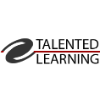'How do you think the current global situation will change L&D for good (or for bad)?'

The world is changed. At the end of 2019 a new virus started spreading rapidly across the planet. Many millions of confirmed infections and hundreds of thousands of deaths have resulted. As governments collectively placed half of humanity under lockdown, the world’s economy has ground to a halt. Entire industries have effectively stopped: aviation, hotels, events, sports, film, retail, to name a few. The cost of all this is impossible to calculate or even comprehend, but it will be in the trillions.
For the world’s 3-billion-strong workforce, working life has changed dramatically in the first half of 2020. Almost all of us face much longer-term change as we consider the prospect of decimated industries, unemployment, redeployment, furloughing, different working environments, updated policies, new company cultures, revised job roles and unexpected opportunities.
30 million HR and L&D professionals around the globe are now responsible for redesigning the global workforce to cope with the new demands of the world. This is the challenge, on which everything - from GDP to unemployment to standards of living to happiness - depends. Being of paramount importance and utmost complexity, we decided to ask 24 industry experts: ‘How will the current global situation change L&D, for good (or bad)?’
Amongst a lot of rich, nuanced insight, three broad categories of ideas emerged: near-term responses, longer-term change and a refocus on the employee. Throughout, there is a strong sense that larger workplace trends, especially towards digital working, are being and will be accelerated by the pandemic. But this is just surface-level categorisation. Please synthesise this thinking in your own way, draw your own insights and share those on this accompanying LinkedIn post.
1. Near-term response
- 10x acceleration to adoption of new technologies
- Realisation that fast is possible even for Big Corporate
- Change brings unexpected opportunities for innovation
- Demonstrable impact essential

 I believe L&D is one of the heroes of this crisis. Not only is the appetite for learning voracious, but companies are desperate to train, enable, and adjust people’s work and employment situations at light speed. The marketplace of digital learning tools and providers has stepped up in a myriad of ways.
I believe L&D is one of the heroes of this crisis. Not only is the appetite for learning voracious, but companies are desperate to train, enable, and adjust people’s work and employment situations at light speed. The marketplace of digital learning tools and providers has stepped up in a myriad of ways.
I’ve talked with companies who have rapidly deployed work-at-home programs, wellbeing and mental health programs, programs to build positive thinking and alignment, and lots of COVID-19 response and safety programs. I believe L&D is one of the most important disciplines in this crisis, and this time builds on years of investment and innovation in the L&D Profession and L&D industry.


 There is a real opportunity for learning teams to rise to the multiple challenges the pandemic creates. Whether it is building deeper skills in virtual working across the business, and maximising the effectiveness of virtual meeting and collaboration technologies, or looking longer term at new ways companies will need to operate and therefore the rapid reskilling or upskilling that will be required. Learning teams need to be engaging in the discussions and seeing where they can add the most value."
There is a real opportunity for learning teams to rise to the multiple challenges the pandemic creates. Whether it is building deeper skills in virtual working across the business, and maximising the effectiveness of virtual meeting and collaboration technologies, or looking longer term at new ways companies will need to operate and therefore the rapid reskilling or upskilling that will be required. Learning teams need to be engaging in the discussions and seeing where they can add the most value."


 Never has there been a time in our industry where L&D has had to rapidly shift its priorities and efforts to support the business under a crisis. Being in the face-to-face event industry, the phrase ‘pivot to virtual’ not only means finding ways to boost remote working capabilities, but temporarily shifting our whole business model to designing and delivering virtual events. The need for L&D to be on the front lines, finding ways to leverage existing digital learning capabilities in an agile way has never been greater. The crisis is also pushing L&D to re-think and reframe its true value and relevance to the business. It makes us ask 'why do we do what we do?’
Never has there been a time in our industry where L&D has had to rapidly shift its priorities and efforts to support the business under a crisis. Being in the face-to-face event industry, the phrase ‘pivot to virtual’ not only means finding ways to boost remote working capabilities, but temporarily shifting our whole business model to designing and delivering virtual events. The need for L&D to be on the front lines, finding ways to leverage existing digital learning capabilities in an agile way has never been greater. The crisis is also pushing L&D to re-think and reframe its true value and relevance to the business. It makes us ask 'why do we do what we do?’
It also makes us question our value proposition. If we can’t be of support now, when will we ever be? Now more than ever, we are learning the need to be there at the ‘point of need;’ delivering the right resources, curating content at speed, being part of collaborative teams and business unit efforts to do what must be done to keep the business moving forward. This is what counts. Shouldn’t it always be like that?

 This pandemic is a true accelerator for many L&D organizations. They’re forced to go digital in ways and with a speed that is unprecedented. I’m hearing great stories of how L&D is adding real value for their business and with an agility they would never have imagined possible. This is being seen and recognized by their leadership and gives them the credibility to evolve from the traditional order-taker into a business partner role.
This pandemic is a true accelerator for many L&D organizations. They’re forced to go digital in ways and with a speed that is unprecedented. I’m hearing great stories of how L&D is adding real value for their business and with an agility they would never have imagined possible. This is being seen and recognized by their leadership and gives them the credibility to evolve from the traditional order-taker into a business partner role.
With all this rapid development I hope L&D will take the time to stop and reflect on what is working and what is not so they can learn and improve. As we’ve all seen, there has been a huge conversion from traditional classroom training to virtual classroom. Although it is being done with the best intention it doesn’t mean it is done right. And that is ok. There are many lessons to be learned during this time and if we do, there is an amazing opportunity to get out of our training bubble. To show our true value. My deepest hope is that when we are at the other side of this crisis organizations don’t feel the need to revert back to their ‘old ways’ but find the best of both worlds.


 While many companies have shifted to working from home due to the current pandemic, my concern is that not all remote works are created equal. Some employers have a culture of mistrust and they take this as an opportunity to tighten control and enhance digital monitoring of their staff (e.g. mandatory video check in and out each day, daily updates on Zoom calls, data tracking of productivity, recording of time spend on various company tech platforms).
While many companies have shifted to working from home due to the current pandemic, my concern is that not all remote works are created equal. Some employers have a culture of mistrust and they take this as an opportunity to tighten control and enhance digital monitoring of their staff (e.g. mandatory video check in and out each day, daily updates on Zoom calls, data tracking of productivity, recording of time spend on various company tech platforms).
Moving forward, my hope is that L&D will use this as an opportunity to support learning and performance better by leveraging the data we generate, not as a surveillance tool but rather to gain insights to support the staff in upskilling and retraining. Collectively, we need to take an active role in heightening awareness, and to provide oversights of data tracking and usage.

 I live my life on the front lines of learning technology systems buying and selling. Activity has never been higher. L&D practitioners have spent the last two months identifying and prioritizing their live training exposure with both employee and external audiences and then rewriting their short and long-term playbook for conversion to virtual learning in all its forms.
I live my life on the front lines of learning technology systems buying and selling. Activity has never been higher. L&D practitioners have spent the last two months identifying and prioritizing their live training exposure with both employee and external audiences and then rewriting their short and long-term playbook for conversion to virtual learning in all its forms.
This has resulted in many organizations expanding their LMS usage or buying a 2nd LMS for external audiences, standardizing on an integrated virtual classroom solution and generally increasing their investment in content development. Fortunately, the L&D industry has always been on the leading edge of moving online, so we are now in a position to be leaders in the global solution going forward.


 How L&D will change as a result of the global situation is for us to decide. This crisis has created an environment that we can either view as terrifying or thrilling. There’s no denying it’s been a challenging and painful opportunity that’s stretched us by highlighting both our deficiencies and strengths. However, where we go from here completely depends on what we do with what we’ve learned.
How L&D will change as a result of the global situation is for us to decide. This crisis has created an environment that we can either view as terrifying or thrilling. There’s no denying it’s been a challenging and painful opportunity that’s stretched us by highlighting both our deficiencies and strengths. However, where we go from here completely depends on what we do with what we’ve learned.
If we choose to ignore it, I see it going two ways. At best, we remain a luxury to our organizations that simply executes on the orders given as long as our organizations have budget and mindshare to support us. At worst, we’re seen as a nuisance that failed to deliver when our businesses needed us most, damaging any perceived value that existed for years to come.
That said, I’m optimistic if we embrace the reality that learning is not about us but a function designed to equip, empower, and prepare employees to deliver on the needs of our business and pursue that relentlessly, we are uniquely positioned to be elevated to a position of value we’ve never seen before. So, the question is, will we embrace the opportunity, get over ourselves and out of our own way, and rise to the challenge? That’s for us to decide.


 The global pandemic has challenged humans in unprecedented ways, but as the adaptive species we are, it has been also a trigger to accelerate transformation: there is a heightened focus on resiliency, transition management and stress management that accelerates the importance of cultivating a growth mindset. Also, the need to suddenly shift to work from home and the related barriers to communication and relationships has given capability experts the chance to prove the relevance of virtual and self-learning tools and technologies.
The global pandemic has challenged humans in unprecedented ways, but as the adaptive species we are, it has been also a trigger to accelerate transformation: there is a heightened focus on resiliency, transition management and stress management that accelerates the importance of cultivating a growth mindset. Also, the need to suddenly shift to work from home and the related barriers to communication and relationships has given capability experts the chance to prove the relevance of virtual and self-learning tools and technologies.
We are seeing the benefits of having continuous learning architectures that are both rich in content and easy to consume. What was already happening because of digital transformation has suddenly skyrocketed: modern learning is more than ever at the center of the scene.


 Educating the educators
Educating the educators
Mark Twain famously said that he didn't want school to interfere with his education. The L&D community shares Twain's cynicism: schools and Universities don't prepare graduates to enter the world of work equipped with the right skills and attitude. This global pandemic has hit (higher) education hard: over half of billion students can't attend classes. As a result, universities in the UK alone face over £2.5b in tuition fee loss. In this context, the L&D community will have to step up and be part of the solution, by partnering with educators in a few areas:
- update the curriculum and make it more skill based, especially around critical digital and life skills
- transfer valuable online learning design and delivery knowledge
- personalize teaching methods by leveraging technology and data science
The L&D community will come together and work to "fix" the education issue.

 There is a likelihood that some of the experiences people have had of using digital tools to communicate and collaborate during the pandemic will forever shape how they use and feel about those technologies. For some, it will be the first time they have really considered how face to face events can genuinely be re-created or even improved when experienced and delivered virtually. For others, the amount of time now spent in applications like Microsoft Teams will ensure that where and how they now look for opportunities to learn and support their performance has changed forever. Learning and development teams must seek to understand how these experiences have changed (or not!), how their colleagues engage with their digital ecosystem, and what implications this has for the relevance of their offer.
There is a likelihood that some of the experiences people have had of using digital tools to communicate and collaborate during the pandemic will forever shape how they use and feel about those technologies. For some, it will be the first time they have really considered how face to face events can genuinely be re-created or even improved when experienced and delivered virtually. For others, the amount of time now spent in applications like Microsoft Teams will ensure that where and how they now look for opportunities to learn and support their performance has changed forever. Learning and development teams must seek to understand how these experiences have changed (or not!), how their colleagues engage with their digital ecosystem, and what implications this has for the relevance of their offer.


2. Longer-term changes
- There’s a new demand for agility - L&D must facilitate this
- The acceleration of digital and tech will stick
- Glass ceilings for innovation have been broken; we will unlearn faster
- L&D will reflect, rethink and re-engineer
- Increased focus on useful, employable skills
- Proof of impact will become a hard, inescapable requirement
- Regression to old ways is a possibility and threat

 For L&D to evolve, it’s not the location of teams that matters. It’s our mindset.
For L&D to evolve, it’s not the location of teams that matters. It’s our mindset.
Lockdown is unlikely to eradicate the troublesome hangovers of outdated thinking:
- Digital is cheaper and inferior to F2F
- People are captive learners ready to be taught
- Success can be measured by completion
Whilst these myths persist, can the industry move forwards?
And there is another powerful driver of inertia: sunk cost fallacy. The volume of lifelong career facilitators who will find it hard to let go of their experience and effort makes me believe the norm will return fairly quickly.
Audiences must vote with their feet to force change. But that would require a seismic culture shift. The wider question I might ask: “how will the current situation change our work environment?” Otherwise, humanity’s gravitation toward hierarchy means reverting to normal could be an accidental outcome of these unprecedented times.


 The pandemic has demonstrated the need for us to challenge the assumptions of how we work and live, to weigh up and respond to ever-evolving evidence, to apply critical thinking and to balance agility with longer-term strategy.
The pandemic has demonstrated the need for us to challenge the assumptions of how we work and live, to weigh up and respond to ever-evolving evidence, to apply critical thinking and to balance agility with longer-term strategy.
We’re witnessing the most rapid humanising of workplace communications many of us have ever experienced. The sheer volume, ubiquity and context of video communications during global lockdown is changing the message itself. Zoom has gone mainstream. Selfie video is making the leap from consumer to business. We’re now more ready to accept imperfection, live or asynchronous, as long as the message is real, valuable and drives us forward.
One of the risks in any crisis is deepening divisions and inequality. This is an opportunity, for L&D to widen, support and increase the value of individual contribution. Decentralised working for many will continue. And, after the experience of mass furlough, follow-up redundancies, pivots in business model and widespread innovation the need to upskill and reskill, constantly and empathetically, is more critical than ever.


 I think L&D will be under greater scrutiny in the months to come because our stock-in-trade, classroom training, will still be unavailable as social distancing is likely to last for some time yet. That leaves many L&D teams with only platforms and content that have been largely resisted or ignored by employees.
I think L&D will be under greater scrutiny in the months to come because our stock-in-trade, classroom training, will still be unavailable as social distancing is likely to last for some time yet. That leaves many L&D teams with only platforms and content that have been largely resisted or ignored by employees.
This should be the start of a new dawn for L&D where we spend more time understanding real problems (and there will be plenty of them) rather than seeking shiny new solutions.
Those who pivot towards Performance Consulting, data-driven decision-making, experimentation and more agile solutions, will prove their worth and are more likely to contribute to what their organisation will be trying to achieve under extremely testing circumstances.
Those waiting for things to ‘get back to normal’ and run courses supplemented by e-learning and generic content will struggle - both to convince their employers and to make any difference at all.


 The COVID-19 pandemic has already forced L&D to change and the initial knee-jerk response has been to shovel face-to-face training into online channels as fast as possible. That is an easy short-term fix but adds no real value. In the longer term, there is both an opportunity and a demand for more fundamental and systemic change to realign L&D from cost centre to organisational value creator. If L&D leaders fail to step up to this challenge, they will become a backwater.
The COVID-19 pandemic has already forced L&D to change and the initial knee-jerk response has been to shovel face-to-face training into online channels as fast as possible. That is an easy short-term fix but adds no real value. In the longer term, there is both an opportunity and a demand for more fundamental and systemic change to realign L&D from cost centre to organisational value creator. If L&D leaders fail to step up to this challenge, they will become a backwater.
The key pressure point will happen later in the year as organisations set their 2021 budgets. With the global economic outlook, it is inevitable efficiencies and cost-savings will be top of the agenda. Those L&D departments that are not seen as being business critical or at least, have a plan to become business critical and deliver tangible value, will come under scrutiny.


 We re-discovered that the need is not only the mother of inventions but also of learning: without a compelling and strong need, humans lack the necessary focus to face the (positive) struggle of learning and create new paths and patterns in their brains. This inspired us to give more value to learning transfer, to shaping learning around real gaps and to forecasting learning needs. But that’s the tradition of learning that comes back. The new thing is how fast we had to unlearn everything: relationship rules, communication tools, dynamics, power equations… all was disrupted in a night. And this “unlearning” ability is the future: we need space for experimentation, innovation and doing things better. So let’s unlearn!
We re-discovered that the need is not only the mother of inventions but also of learning: without a compelling and strong need, humans lack the necessary focus to face the (positive) struggle of learning and create new paths and patterns in their brains. This inspired us to give more value to learning transfer, to shaping learning around real gaps and to forecasting learning needs. But that’s the tradition of learning that comes back. The new thing is how fast we had to unlearn everything: relationship rules, communication tools, dynamics, power equations… all was disrupted in a night. And this “unlearning” ability is the future: we need space for experimentation, innovation and doing things better. So let’s unlearn!


With the shift to digital accelerated by COVID, the benchmark for consumer-grade experience has risen sharply. L&D will need to echo the digital relationships that we have come to expect from our trusted news websites and platforms, which drip-feed us articles and videos segmented according to our profiles, habits and preferences. This means farewell to canned click-click-next courses with lengthy reviews and QA cycles in favor of more personalized resources. Savvy content does not mean adding silly games or shiny interactivities, either. It means understanding the intricacies of how digital media works and integrating solid learning theory.
The delivery mechanism also needs a rethink. Workflows have been altered for good. Entire companies have migrated to platforms like MS Teams or Slack overnight and new habits are already gelling. Rather than attempting to shout over the digital noise with destination platforms like the LMS, L&D must reverse engineer itself starting from where people are already working and interacting. Where are the virtual water coolers? Which business units are interfacing with each other, and where are the skills deserts?
By no means is this a once-and-done exercise. It is a continuous analysis and recalibration to keep pace with workflow and drive business outcomes. After all, if L&D was already feeling pressure to show value, this crisis has made it an imperative. Make your case to the C-suite now.



 In the last few months we have seen the dramatic changes companies are going through — not only with how people learn for work, but fundamentally how people work. Remote working is going to become the new normal, and as people have been forced to adapt to these changes, companies and employees have realized that they don’t have to be in the office to be productive — or to be learning new skills. L&D needs to shift its focus to helping people build skills, and employees need to showcase their transferable skills with the goal of employability.
In the last few months we have seen the dramatic changes companies are going through — not only with how people learn for work, but fundamentally how people work. Remote working is going to become the new normal, and as people have been forced to adapt to these changes, companies and employees have realized that they don’t have to be in the office to be productive — or to be learning new skills. L&D needs to shift its focus to helping people build skills, and employees need to showcase their transferable skills with the goal of employability.
Many companies are already creating internal career marketplaces focusing on employee skills. The crisis has required some companies to shift hundreds, if not thousands, of internal employees to completely different jobs in a very short period of time. Companies are doing that by understanding what skills people have and how they can match those skills with what the company needs in a very agile and dynamic way.
All of this is good news for learning and development for the future. Although this global disruption has been difficult, it has demonstrated how the workforce and workplace of the future can function effectively with skills at the core.


 This is a tantalising question and as I approached it, I started to consider how much we actually know about what has changed in such a dramatic yet brief period. We are in the midst of a properly global experiment in changing working practices and need to be poring over all signals of changing behaviour we can detect. “Observe, don’t ask” will be a useful principle to apply to our data gathering, as we continue the shift towards digital data sets and away from subjective evaluation. I wonder how much we really know about what is going on out there.
This is a tantalising question and as I approached it, I started to consider how much we actually know about what has changed in such a dramatic yet brief period. We are in the midst of a properly global experiment in changing working practices and need to be poring over all signals of changing behaviour we can detect. “Observe, don’t ask” will be a useful principle to apply to our data gathering, as we continue the shift towards digital data sets and away from subjective evaluation. I wonder how much we really know about what is going on out there.
The speed of decision-making and action I have observed from many conversations offer some real encouragement. L&D has not always been a natural home for the ‘good enough is great’ sentiment. Anything else is a luxury though. Teams have been applying best judgements to the tools and resources they have to hand, creating solutions in hitherto unknown timeframes. This, I believe, will shift expectations of what is possible and what quality means (efficacy over appearance). An uncomfortable shift but a healthy one in the longer run.
As physical remoteness has become commonplace, I think we have also seen some realisation that self-help and self-direction are normal behaviour patterns for learners. This starts to redefine what facilitation can mean and how we can use those central L&D skills to best effect as remoteness continues, applying them where they are most valued.

 I don’t think L&D will change just because of COVID-19. Yes, we are already seeing a mass transition to virtual learning and this trend will probably continue for some time. However, by itself, digital delivery is just a surface-level tweak.
I don’t think L&D will change just because of COVID-19. Yes, we are already seeing a mass transition to virtual learning and this trend will probably continue for some time. However, by itself, digital delivery is just a surface-level tweak.
COVID-19 has undeniably given L&D its time in the limelight. Now more than ever there are plenty of opportunities both to support organisations and to make a difference for individual employees. However, unless L&D take this chance to deliberately rethink their purpose and ways of operating in organisations (context over content; performance over tests; business goals over discrete learning requirements), I believe it will go back to business as usual, only with more digital learning on offer.


3. We’ll see the employee as a human being again
- The crisis has highlighted the importance of employee mental health
- Because of new agility and increased job switching, soft skills are essential
- Engagement is the currency of learning and development
- Increased independence means that employees have more control over their working life - L&D needs to shift to support that

 COVID-19 and the resulting devastating circumstances are clearly no welcome thing. However, it has given us the chance to focus on what really matters. Moreover, it’s often in a challenge that valuable traits are developed. It’s the pressure that transforms and elevates diamonds above their chemical counterparts; soft lead pencils.
COVID-19 and the resulting devastating circumstances are clearly no welcome thing. However, it has given us the chance to focus on what really matters. Moreover, it’s often in a challenge that valuable traits are developed. It’s the pressure that transforms and elevates diamonds above their chemical counterparts; soft lead pencils.
To that end, COVID-19 should trigger a long-overdue reflection in organisational learning. For many, the treadmill of running face-to-face courses has been rudely disrupted by enforced remote working. There are four welcome trends emerging from those succeeding in facilitating effective organisational learning during lockdown: Prioritize, digitize, socialize and humanize!
#Prioritize … the attention must be on what is genuinely needed for the organisation to survive and thrive. #Digitize … COVID-19 highlights that effective digital solutions now underpin successful organisations. #Socialize … social connectivity is a key to effective lockdown working; effective remote relationships are crucial. #Humanize … much is said of a move to “learning in the flow of work”; COVID-19 has thrust us into “learning in the flow of LIFE”. Personal lockdown-working circumstances are unique and challenging; one size can’t fit all. It never has!


 The Learning and Performance Institute has witnessed an enormous, unprecedented move in L&D. Every organisation has been forced to look at digital and virtual solutions. This is a further acceleration of the change that was already happening, but the difference is now it is urgent, and the significant challenge is in understanding where the learning is really happening.
The Learning and Performance Institute has witnessed an enormous, unprecedented move in L&D. Every organisation has been forced to look at digital and virtual solutions. This is a further acceleration of the change that was already happening, but the difference is now it is urgent, and the significant challenge is in understanding where the learning is really happening.
The role of L&D now is to provide learning experiences digitally to a potentially remote workforce… reskilling and upskilling… and in many cases in very human content areas. When we analysed the fastest-growing soft skills people are learning at work in 2020, we saw an increase in topics like growth mindset, creativity, and innovation.
It’s increasingly important for employees to adopt a growth mindset of continuous learning and be open to change in the workplace. Companies with strong cultures and a desire to place learning and people at the heart of what they do have a much higher chance of success.


 Adoption of new practices in organisational learning and the shift away from the classroom have been too slow. Barriers to adoption of new practices have dropped. There is potential for a massive shift right now - well beyond simply replacing face-to-face classroom sessions with online sessions. As a minimum business continuity now demands options for critical learning in both physical and virtual environments.
Adoption of new practices in organisational learning and the shift away from the classroom have been too slow. Barriers to adoption of new practices have dropped. There is potential for a massive shift right now - well beyond simply replacing face-to-face classroom sessions with online sessions. As a minimum business continuity now demands options for critical learning in both physical and virtual environments.
The human aspects of digital transformation are receiving more focus. The shift in leadership and working practices will create greater empowerment and trust in many organisations. This creates more positive conditions for learning cultures. If learning professionals can shift their mindset and practices far enough we could emerge with more adaptive workforces and organisations. Now is the time to move forward with courage and conviction.


 There is no downside for L&D. At least not for strategic, future-focussed L&D. Three things have become clear: The one-shot response, 'whatever the problem, a course is the solution', is bankrupt and inadequate in the current climate.
There is no downside for L&D. At least not for strategic, future-focussed L&D. Three things have become clear: The one-shot response, 'whatever the problem, a course is the solution', is bankrupt and inadequate in the current climate.
L&D that can’t or won’t engage with the deep and profound issues affecting work and organizations is making itself redundant.
L&D is a huge part of the solution. It builds connections; it develops the generative skills that get people solving the wicked problems that impact them and their workplaces, and it creates the climate where optimism and empowerment flourish.
Just as it will be impossible in the near future to separate work and the rest of everyone’s lives or ignore the whole person; L&D will have to enable learning as part of work and work as part of learning in the context of not just competence, but empathy, tolerance and support.
Forget the superficiality of new learning environments and embrace the complexity of learning cultures.


 Organisational implications: Given that most organisations doubled down on learning during the lock-down, narratives around building organisational capability, capability frameworks and the various tenets of leveraging live virtual classrooms, digital learning, content libraries became mainstream. It also became clear that there’s only so much you can do to create structured learning experiences and pathways. The need to think gamification, simulation-based events, and virtual tournaments are all options on the table. Engagement, mental health, wellness, and motivation will become key drivers while learning will remain table stakes. The narrative of empathy–engagement–education will continue in the short to mid-term. Employee experience will also emerge as the new currency of learning.
Organisational implications: Given that most organisations doubled down on learning during the lock-down, narratives around building organisational capability, capability frameworks and the various tenets of leveraging live virtual classrooms, digital learning, content libraries became mainstream. It also became clear that there’s only so much you can do to create structured learning experiences and pathways. The need to think gamification, simulation-based events, and virtual tournaments are all options on the table. Engagement, mental health, wellness, and motivation will become key drivers while learning will remain table stakes. The narrative of empathy–engagement–education will continue in the short to mid-term. Employee experience will also emerge as the new currency of learning.
L&D for L&D: The need for L&D to eat its own dog food will also accelerate and teams will take the time to pause, reflect, retrain and refresh. Building the capability of learning teams across tenets of digital learning i.e. virtual facilitation, content curation, community management, experience design are all options on the table. There is an eager partner / vendor community out there that will support clients. Leveraging partners, providers, global experts, open courses to build L&D team capability will be smart investments in the near term.

![]()
Dive deeper

“Content intelligence is a powerful solution for streamlining content, engaging learners with the most relevant content, and maximizing ROI on learning.”
Josh Bersin
Global Industry Analyst

"Content relevance analysis provided striking results, informing the decision to conduct an in-depth market analysis before committing to new multiyear contracts for learning content libraries."
Rosemary Hoskins
Global Capability Lead, AstraZeneca

'I had 70,000 or 80,000 content items available across different partners, it was overwhelming. When I started working with Filtered, I realised there are better ways to do it. Using technology and algorithms we were able to focus on the right pieces of content for different skills.'
Martin Peart
People Effectiveness Director, GSK

“Filtered help connect the dots of L&D resources using AI and machine learning - personalizing great content for our talent.”
Avinash Chandarana
Global L&D Director, MCI Group

‘The Filtered platform really helps us to improve the overall learning experience in a way that, in Heineken, we have never been able to do before."
Nicole Stead
Global Digital Learning Lead, Heineken

“We wanted to leverage the technology offered by Filtered to provide a really personalised journey for our students. It's incredibly smart how much their technology improves the more our students interact with it."
Binda Patel
Head of Innovation, The Sutton Trust

"I can’t begin to tell you how pleased I am that Filtered has launched at Nottingham and how grateful we are for your work and patience as we worked through the implementation."
Dr Nalayini Thambar
Director of Careers and Employability

"Filtered represents the future, actually the present, of AI in learning."
Donald H Taylor
Chairman, The Learning and Performance Institute

"Filtered takes competencies and skills we want in the business and intelligently provides learning recommendations at the individual level."
Peter Manniche Riber
Head of Digital Learning, Novo Nordisk

“Filtered's passion, flexibility and beta mindset are an example of how we want to work with partners. Thanks for making marvelous things with us and for us!”
Francesco Mantovani
Global Talent Development, Procter & Gamble
